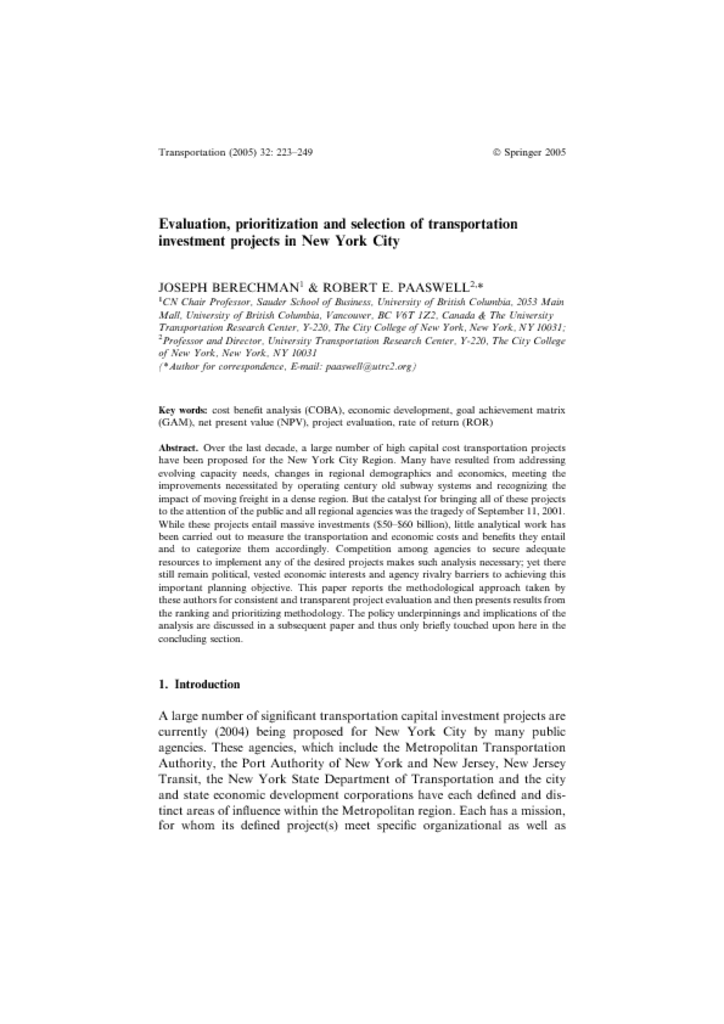Over the last decade, a large number of high capital cost transportation projects
have been proposed for the New York City Region. Many have resulted from addressing
evolving capacity needs, changes in regional demographics and economics, meeting the
improvements necessitated by operating century old subway systems and recognizing the
impact of moving freight in a dense region. But the catalyst for bringing all of these projects
to the attention of the public and all regional agencies was the tragedy of September 11, 2001.
While these projects entail massive investments ($50?$60 billion), little analytical work has
been carried out to measure the transportation and economic costs and benefits they entail
and to categorize them accordingly. Competition among agencies to secure adequate
resources to implement any of the desired projects makes such analysis necessary; yet there
still remain political, vested economic interests and agency rivalry barriers to achieving this
important planning objective. This paper reports the methodological approach taken by
these authors for consistent and transparent project evaluation and then presents results from
the ranking and prioritizing methodology. The policy underpinnings and implications of the
analysis are discussed in a subsequent paper and thus only briefly touched upon here in the
concluding section.
Publication Category




